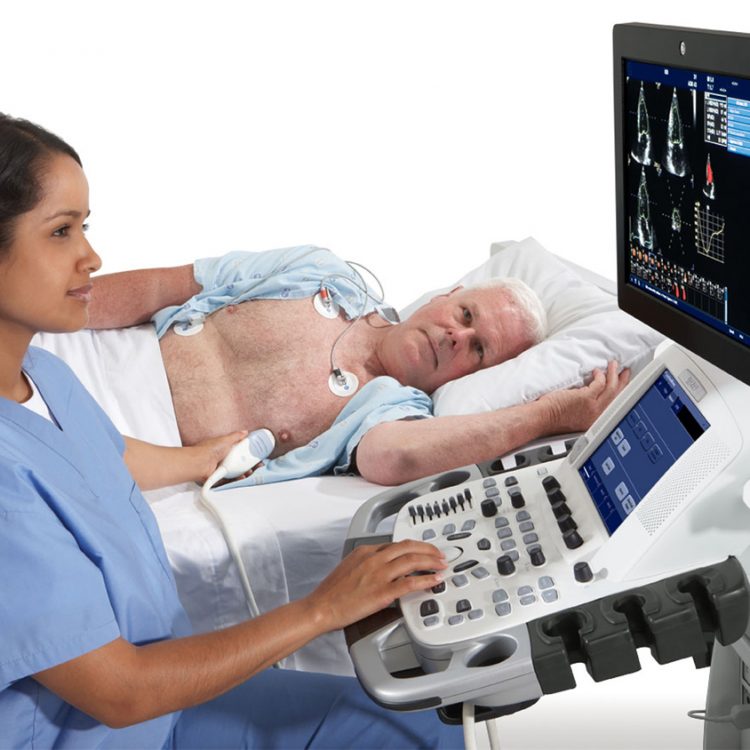2D ECHOCARDIOGRAPHY
It produces live images of your heart. Echocardiography is one of the most widely used diagnostic tests in cardiology in the diagnosis, management, follow-up of patient with any suspected or known heart disease. The biggest advantage to echocardiography is that it is not invasive (does not involve breaking the skin or entering body cavities) and has no known risks or side effects. Echo provide an information like size, shape of heart, pumping capacity, location and extent of any tissue damage. it also gives other estimates of heart function, such as a calculation of the cardiac output, ejection fraction, and diastolic function to your physicians. it can also produce accurate assessment of the blood flowing through the heart by Doppler echocardiography, using pulsed- or continuous-wave Doppler ultrasound. This allows assessment of both normal and abnormal blood flow through the heart. Any leaking of blood through the valves, and estimate how well the valves open. The Doppler technique can also be used for tissue motion and velocity measurement, by tissue Doppler echocardiography.

